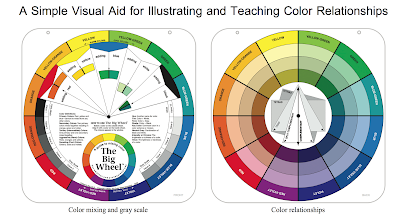The Mathematics of Painting - Introduction
A funny thing happened while becoming an artist and landscape oil
painter (after my first careers as a Mathematician and Computer Programmer). I noticed how often the 'bibles' of painting included chapters on
design and what I perceived as mathematical elements: aerial perspective,
dimensionality, proportions, unequal measures, patterns and
motif, self-similarity, informal sub-division, symmetry, dynamic symmetry, the golden mean, etc.. Then terms like fractals, Mandelbrot, self-similarity and
fibonacci series began to crop up everywhere.
Almost 20 years after beginning my painting journey I realize that it has brought me full-circle back to my roots in mathematics. And my paintings are developing further as I embrace this essential part of my life. I now actively seek mathematical patterns for my art. After all, landscape painting is based on what we see around us and mathematics underlies all of nature.
What is radical impressionism: it's my attempt to marry Mathematics and Painting and so we now have, Radical Impressionist: A Mathematician Paints. The use of "Radical" is intentional: in my studies of designs I have discovered more than the Golden Ratio as a pleasing proportion of height vs width for paintings. Historically, artists have used other ratios involving the mathematical term, radical; eg, square root of two and others. There's a fascinating link between these radicals and the golden mean limit. I will add an article with references devoted to this topic (soon).
What is radical impressionism: it's my attempt to marry Mathematics and Painting and so we now have, Radical Impressionist: A Mathematician Paints. The use of "Radical" is intentional: in my studies of designs I have discovered more than the Golden Ratio as a pleasing proportion of height vs width for paintings. Historically, artists have used other ratios involving the mathematical term, radical; eg, square root of two and others. There's a fascinating link between these radicals and the golden mean limit. I will add an article with references devoted to this topic (soon).
Topics to be Covered in this Blog
(Edit: Aug 2020. I mean to write a chapter on each topic here, with painting illustrations. Perhaps I will yet get around to it…)- Compositions:
- Patterns in Nature:
- Turbulence:
- Aerial Perspective:
- Golden rectangle:
- Informal division:
- Dynamic symmetry:
- Fractals and chaos:



